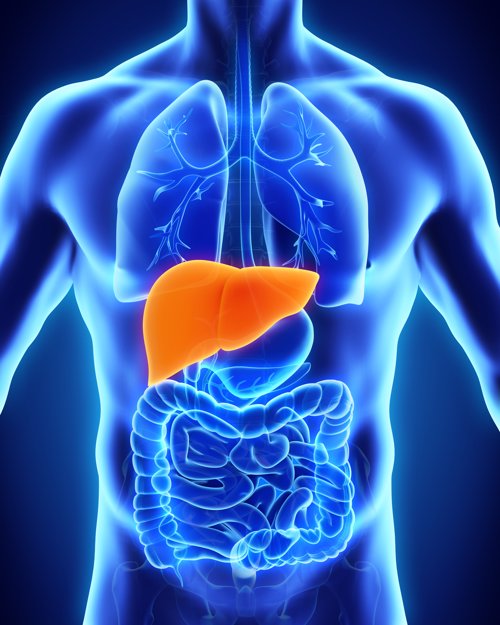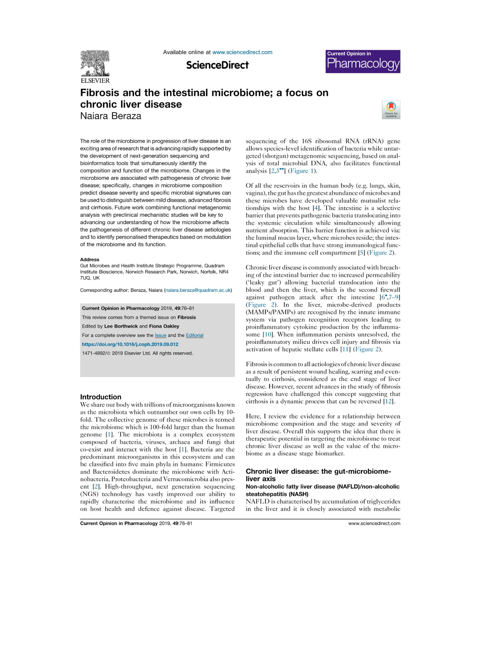
News
OUR INTERVIEW WITH DR NAIARA BERAZA
Dr Naiara Beraza is a Group Leader at Quadram Institute, a Norwich-based institute that aims to understand how food and microbes interact to promote health and prevent disease. Her team investigates the mechanisms regulating the gut-liver axis in health and disease. In our interview with Dr Naiara Beraza, we find out more about her career and research, and the gut-liver axis…

1. Can you tell us about your career path, and how you became involved with the Quadram Institute?
I did my PhD at the Internal Medicine Dept at the University of Navarra in Spain and in 2004 I moved to Germany where I did my postdoc at the Med School at the University of Hannover and the University Hospital in Aachen. After obtaining a Ramon y Cajal fellowship, in 2009 I moved back to Spain to the CIC bioGUNE, a research institute. In 2015 I moved to the Quadram Institute in Norwich to establish my own lab, initially as a fellow and later as a tenure group leader. This means I have worked in both clinical departments and research institutes.

2. What led to your interest in liver function and liver disease, and in particular the relationship between the gut and liver known as the “gut-liver axis”?
I started investigating the mechanisms mediating liver regeneration, which is a fascinating process already mentioned in Greek mythology (the Prometheus myth). During my PhD and mainly during my postdoc I started to focus on investigating the mechanisms mediating acute liver injury and the progression of chronic liver disease; including obesity-related steatohepatitis. In western countries, obesity has pandemic proportions, and its incidence is rising in developing countries, which makes it a very relevant topic for human health.
Regardless of the aetiology, chronic liver disease is associated with changes in the microbiome composition and disruption of intestinal barrier function that contributes to disease progression via the translocation of bacterial products into the liver. Since I established my lab at QIB, my research is focused on defining the mechanism mediating the gut-liver axis communication during health and disease. Increasing our understanding of how our intestine, the microbiome and the liver communicates will enable us to define new therapeutic interventions to treat liver disease.
3. You have mentioned that the gut and liver communicate via the gut-liver axis. Can you tell us more about what we know about this communication pathway so far?
The liver and the intestine are anatomically linked. The liver receives the majority of its blood flow from the intestine via the portal circulation, which enables the transport of nutrients from the food we eat to the liver, the key metabolic organ of the body that will synthesise and/or transport metabolites to the whole body. In turn, the intestine receives key metabolites from the liver, like bile acids via the bile duct that connects the liver and the small intestine (duodenum). These bile acids aid the digestion and absorption of nutrients but also have key signalling functions and a role in controlling the intestinal microbiome composition.
4. While we’re on this topic, could you elaborate on the role of the microbiome in the gut-liver axis?
As I briefly mentioned above, bile acids are very relevant molecules for the gut-microbiome-liver axis. Thus, bile acids are synthesised exclusively in the liver and transported into the small intestine postprandially, to aid digestion and nutrient absorption. Importantly, these bile acids synthesised and transported from the liver are metabolised by some bacteria living in our intestine into secondary species that are then recycled back into the liver in a very efficient recycling process, and we only lose about 5% of bile acids in faeces every day.
Interestingly, not all bugs have this metabolic capacity and in fact, some bacteria cannot live in a bile acid-rich environment, so bile acids regulate intestinal bacterial composition by having bactericidal properties.
Recent studies have highlighted the role of bile acids in regulating the immune response so their relevance as regulators and mediators of the gut-microbiome-liver axis is increasingly obvious. During disease, there is a clear association between changes in microbiome composition, loss of intestinal barrier function (thus increased permeability) and translocation of bacterial products into the liver that further aggravate disease progression.
5. In 2019, you wrote a paper titled “Fibrosis and the intestinal microbiome; a focus on chronic liver disease”. Can you share what the key messages of the paper were and how changes to the microbiome may be associated with the pathogenesis of chronic liver disease?
Our knowledge of how the microbiome composition changes during chronic liver disease has significantly improved within the last few years thanks to the advances in sequencing and bioinformatics tools. Now, it is well accepted that the progression of chronic liver disease (regardless of the aetiology) is associated with changes in the microbiome composition and function.
We have also gained an understanding of the functional changes of the gut microbiome during disease, particularly at late stages during cirrhosis although more research in this area is needed to demonstrate the causality of these changes in the pathogenesis of the disease. However, we still need to understand the mechanisms mediating the impact of the microbiome in disease progression in preclinical models.
Finally, while there have been some studies showing promising results in the treatment of liver disease based on the modulation of the microbiome (with prebiotics, probiotics, antibiotics, faecal microbiome transplants (FMT), etc…), more statistically robust and well-designed clinical studies are needed.

6. You are a Group Leader at the Quadram Institute, where you and your team investigate the mechanisms regulating the gut-liver axis in health and disease such as inflammatory conditions, chronic liver disease and cancer. Can you share what you and your team do on a day-to-day basis and what you are currently researching?
My lab works mainly with preclinical experimental models of liver disease where we do mechanistic studies to understand how the microbiome interacts with the host. For this, we combine in vivo work with in vitro studies on primary cells isolated. We are currently investigating how changes in immune cell metabolism influence their function during liver disease. We are expanding these studies to the liver immune response to bacterial infection, which is relevant in the context of chronic liver disease where intestinal permeability increases and allows the translocation of bacterial products into the liver, aggravating disease progression. We are also developing work where we are investigating how the modulation of the microbiome impacts liver disease progression with the aim to propose new (bacteriotherapy) therapeutic strategies to treat liver disease.
7. Is there any evidence behind the use of microbiota-therapeutic interventions that may improve the gut microbiome in patients with liver disease? If so, could you elaborate on some of these therapeutic methods?
This is an exciting area of research that is currently ongoing. There are several pre-clinical and some clinical studies that have shown the efficacy of bacteriotherapy (prebiotics, probiotics, synbiotics, and antibiotics as well as FMT) in attenuating liver disease progression and associated complications like endotoxemia and hepatic encephalopathy among others, which are very encouraging! Still, as I mentioned before, more preclinical mechanistic studies and robust clinical trials are needed to translate bacteriotherapy to clinical practice.
8. Continuing from the previous question, could you comment on bacteriotherapy and its efficacy as a therapeutic option for hepatocarcinoma?
This is again a fascinating and very promising area, although complex.
Most of the available studies focused on treating established HCC have been done in preclinical models in rodents and some have shown the efficacy of antibiotics to reduce tumour growth. In the clinical setting, most of the current studies available focus on preventing hepatocarcinoma development rather than treating established HCC. As I mentioned before, in clinical studies antibiotics have proven beneficial to reduce complications associated with liver cirrhosis, but long-term treatment can have obvious deleterious effects including antimicrobial resistance (AMR) and other toxic effects on the body. More research is needed in this direction.
Likewise, other bacteriotherapy approaches like probiotics have shown efficacy in attenuating disease progression and treating established HCC in preclinical models, showing reduced tumour growth though these findings haven’t yet been translated into clinical practice.
Most importantly, there has been research showing the crucial impact of the microbiome in cancer immunotherapies. This area is very relevant as the changes in the microbiome observed related to chronic liver disease can alter the efficacy of immunotherapies, further supporting the importance of defining new approaches to modulate the microbiome composition and function to treat hepatocellular carcinoma. Indeed, preclinical studies have shown that supplementation with Bifidobacterium species improves anti-PDL1 and anti-CTL4 immunotherapies. Again, this is an important area that needs further research.
9. Finally, what would you like to say to aspiring researchers, particularly those interested in this scientific field?
As a general comment, I’d advise any young researcher to work in an area that excites you, which may not necessarily be a “hot topic”. Research has a big component of failure, and one needs lots of resilience so it’s crucial to stay motivated and one can only do that if you really like what you’re investigating, and you have the eagerness to know more about your topic! I’d also recommend young researchers to learn as much as they can from the labs they work in, and not only techniques or tools directly related to their research. Having diverse skills is invaluable to having flexibility when choosing the next step in your career.
Of course, I find research in the gut-microbiome-liver axis super exciting. For the last few years, this area of research is increasingly gaining importance in the Hepatology field. There’s so much interesting research to be done and to make a real impact on patients’ lives so I would encourage young researchers in the Hepatology field to be curious about the gut-microbiome and microbiologists to think about how their favourite bugs can impact the gut-liver function.